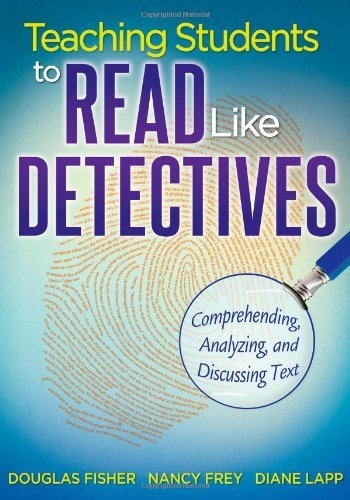A central assumption of text-based discussions is that comprehension and learning can occur through dialogue with others. The text-based discussion approach challenges students to extract information from text, consider background knowledge, and engage in academic discourse about ideas and concepts, and it demands that students read, write, and think rhetorically in order to interrogate the text itself: Where did this come from? What influenced its creation? How does the author s viewpoint shape this text? What other perspectives need to be explored? What might be missing? By posing and exploring these kinds of questions in depth, with the text itself at the center, students become more sophisticated readers, writers, and thinkers. Teaching Students to Read Like Detectives explores the relationship between text, learner, and learning through discussion and rhetorical reading and writing in elementary, middle, and high school. Chapter 1 describes the importance of recognizing that students have something worthwhile to say and that a discussion-based classroom requires that teachers relinquish some control of the discourse. It presents descriptions of literary theory, ways readers approach the text, ways to balance and scaffold text-based instruction, and explanations of reading comprehension strategies. Chapter 2 explains principles of argumentation and rhetoric, which are common in high school English classrooms but less widely known in other grade levels and content areas, and discusses the text author s use of formal logic in argumentation and how detailed student analysis of argumentation allows deeper understanding of complex texts. Chapter 3 examines how narrative texts facilitate discussion and offers examples using a variety of fiction. It presents the literary components that readers can use to make sense of what they are reading, and describes how to encourage critical literacy through questioning and the use of instructional routines. Chapter 4 explains the purposes, structures, and features of expository texts, why they are so challenging to comprehend, and how they can be utilized through discussion and analysis to extract meaning and cultivate thinking. It also outlines organizational and instructional classroom practices for expository-text reading and discussion that help students expand their content knowledge and independence. Finally, chapter 5 explores reading as meaning making when students interact with Web 2.0 digital tools and sources beyond printed text. It examines how modern, multilayered student strengths can be supported in a school environment, defines types of new-media texts and how literacy instruction can be differentiated to accommodate learning differences, and addresses how new-media texts are comprehended and how to incorporate them in classroom instruction.
Authors
Douglas Fisher
Additional Info
- Publisher: Solution Tree
- Format: Perfect Paperback
- ISBN: 9781935543527
| SKU |
Condition |
Store |
Shelf |
Price |
|
| 1493814 |
Very Good
|
Warehouse |
66-22-6 |
$9.99 |
Add to Cart |
